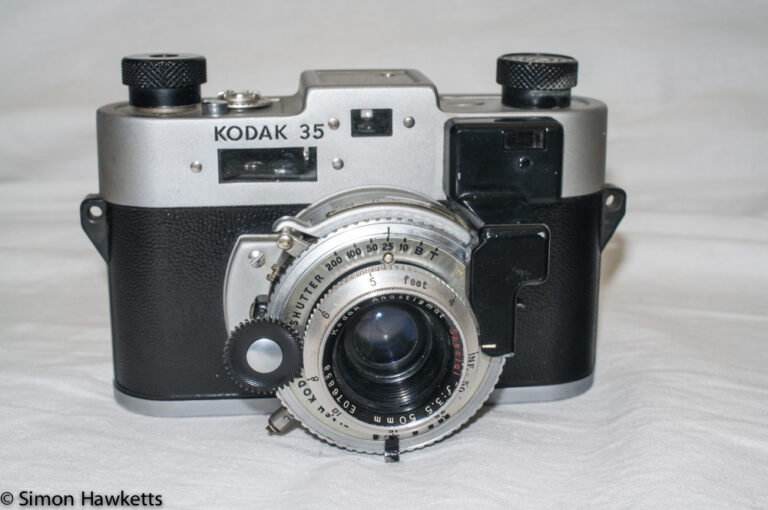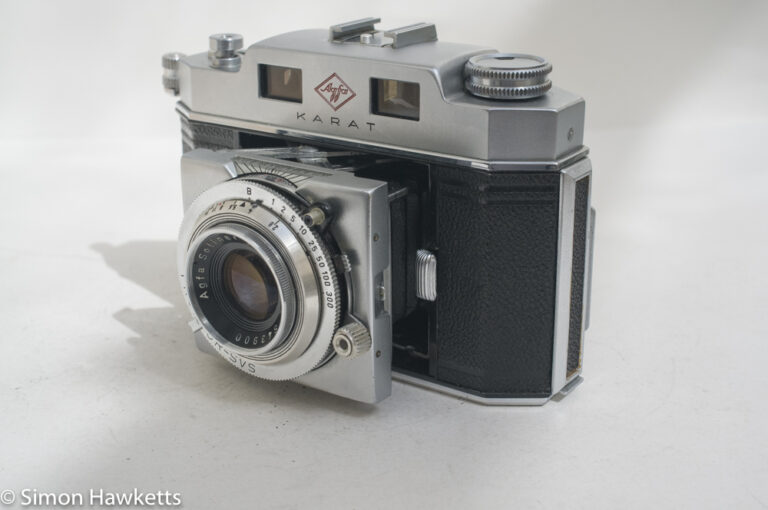The Interesting Beauty Beaumat 35 mm camera.
The Beauty Beaumat is a 35 mm rangefinder camera with a few rather interesting features which set it aside from some of the more ‘run-of-the-mill’ rangefinder cameras which were produced around the same time, which was about 1960.
My Beauty Beaumat Camera
I bought the Beauty Beaumat because I’d not seen one before, and it seems to be one of the more exotic models. It was bought from eBay for a few pounds from a seller who described its condition as ‘unknown’.
I’ll be charitable and assume that they really didn’t know too much about cameras and didn’t spot that the focus and shutter are both locked and various screws are missing from the camera! As it stands, the camera is a bit of a wreck, so my description of the unit will be based upon what I can deduce from my non-working example – I will need to strip the unit down and see if it can be repaired, but it’s possible that it may become a donor camera for another unit.
At least the last option is a possibility since, apart from dirt, the camera is in reasonable cosmetic condition, so it could provide parts.
Pictures of the Beauty Beaumat





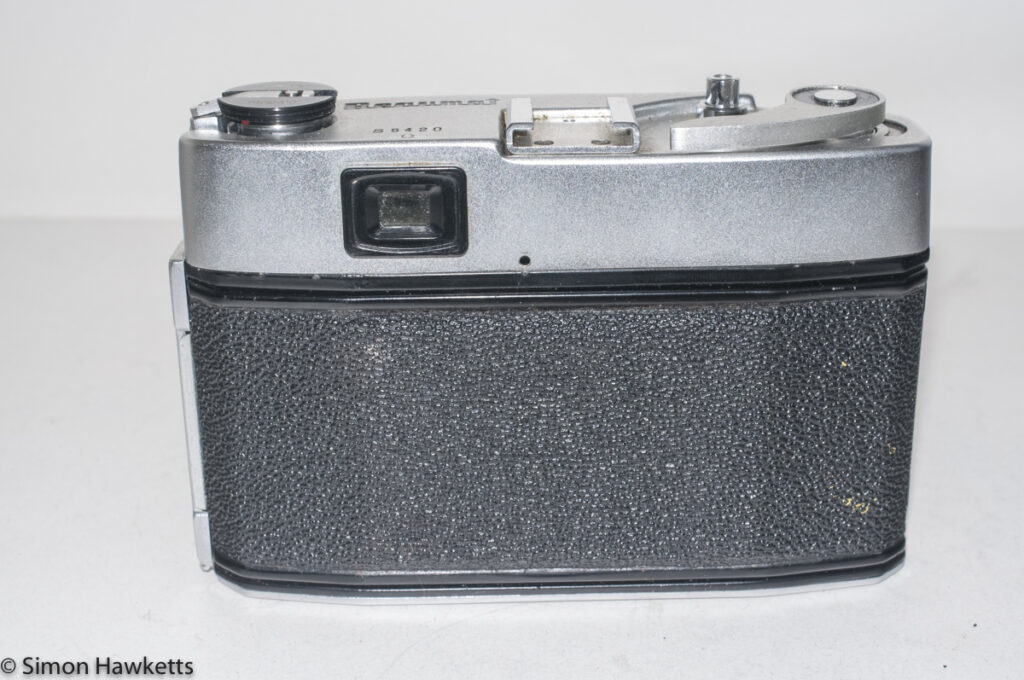


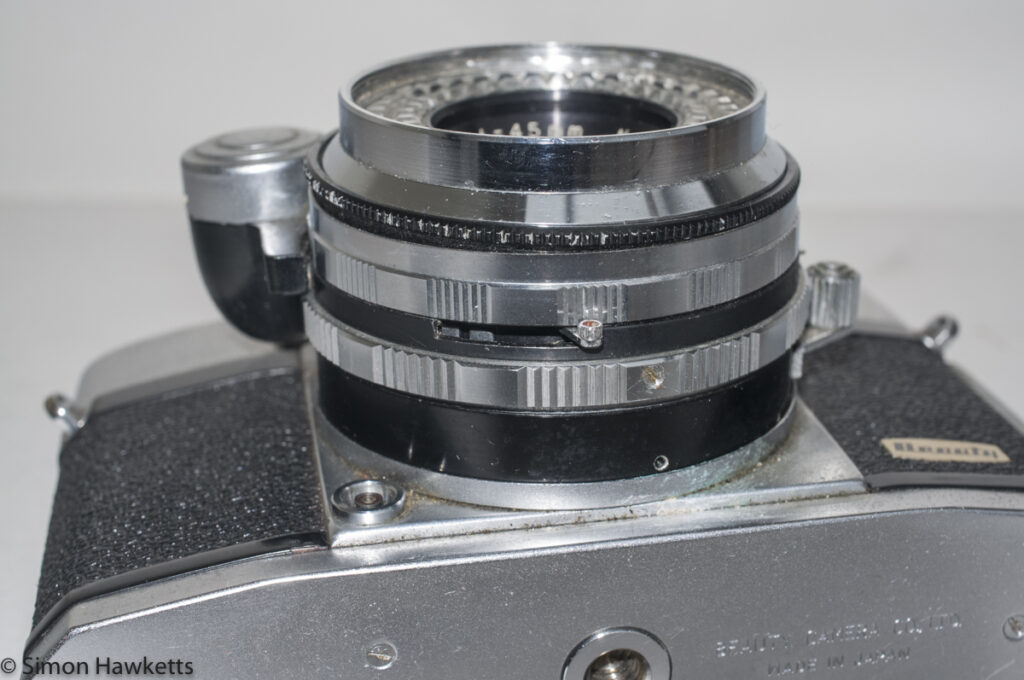

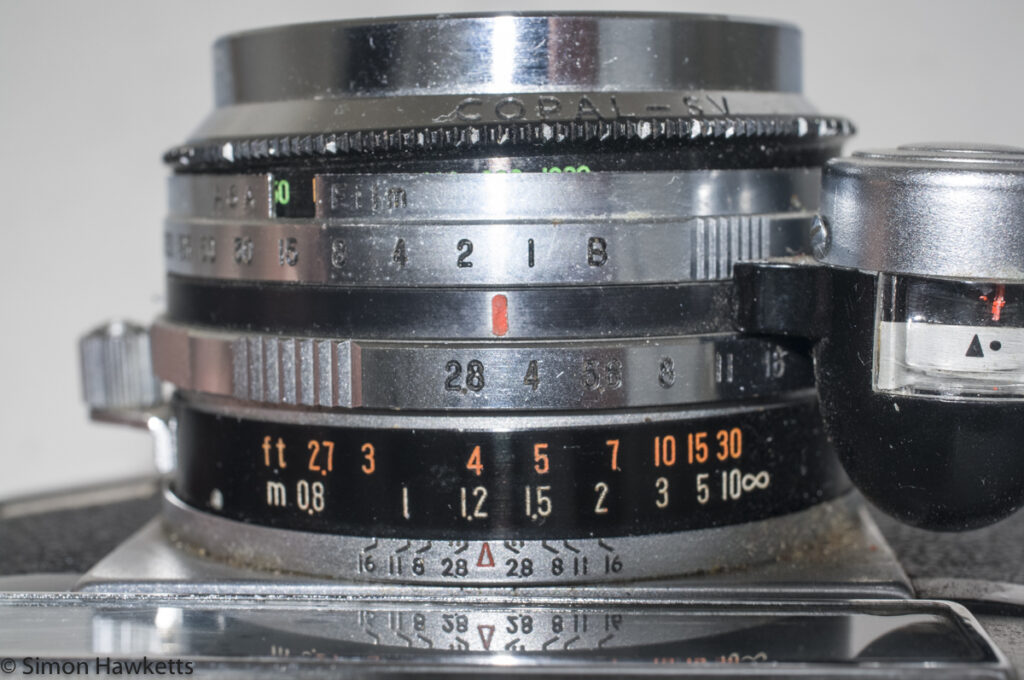
Beauty Beaumat Description
Because my camera is not working, the description which follows is based on my examination of my camera but with some assumptions about how I assume it works. If I manage to repair the unit and find that I’ve made errors here, I’ll come back and alter this post.
Exposure
Looking at the camera, the most obvious feature which sets it apart from other, similar units, is the light meter which is fitted to the side of the lens.
It’s not unusual to have a light meter fitted, of course, but the styling is certainly different from any other camera I’ve seen. It is a bulbous addition to the side of the lens unit, with a small window in the top exposing the meter needle.
The meter is coupled to the camera controls, so it’s fairly convenient to use; point the camera at the scene and adjust the shutter speed and aperture rings on the lens until the meter needle is aligned with the centre mark in the window.
Of course, it’s up to the photographer to know how to choose the combination of aperture & shutter speed to get the effect he wants in the photograph – although some cameras have a ‘locked’ option to allow the two parameters to be adjusted together, this camera doesn’t do that.
The light-meter is driven by a light cell mounted round the inside of the lens barrel in a similar manner to the Olympus Trip camera. The advantage of this arrangement is that the light is measured after it passes through any filters fitted to the camera.
In the modern, digital photographic world, filters are used less frequently than they were in the time of film photography. I remember as a teenager pouring through books learning how different coloured filters were used to enhance different aspects of the photo, but you needed to compensate for the light loss when the filter was fitted. With the light cell fitted inside the filter ring, this was something you didn’t need to worry about.
Focusing
This is a rangefinder camera, which was a popular focus assist option for higher end, fixed lens cameras at the time this unit was made.
In a rangefinder camera, there is a portion of the image shown in the viewfinder which is a different colour from the rest of the scene, and which moves in and out of alignment with the view as the focus adjuster is moved. This is achieved by having a mirror fitted in the top of the camera which superimposes an image of the scene being photographed from another viewfinder window a few inches from the main window. In the pictures above, you can see this as a small circular hole just above and to the right of the light meter.
The angle of the mirror is controlled by the same lever as the focus of the lens, and as long as the system is properly calibrated, it’s possible to set the focus of the subject by aligning the two images. Many people found this a faster and more accurate way of focusing than the other very popular mechanism, which was the through the lens view obtained with the SLR design.
Other features
In many other respects, the Beauty Beaumat has a similar spec to other cameras made by many manufacturers. The shutter is a standard unit – a Copal SV, and the lens, at 45 mm, is slightly wider than many cameras made at the time. The widest aperture of f/2.8 is again a fairly standard aperture.
I would guess that the Beaumat was a mid-range camera for people who wanted more than a simple snapshot machine, but didn’t want the complication of exchangeable lenses or SLR technology.
Beauty Beaumat Specifications
- Beauty Beaumat 35 mm rangefinder camera
- Copal SV shutter
- Coupled rangefinder for focusing
- Shutter lock built into film advance
- Build in match needle light-meter attached to lens barrel
- ISO 6 to 1600
- Light cell mounted around lens
- Shutter speeds 1sec to 1/500sec + bulb
- Self-timer
- 45 mm Biokor f/2.8 lens
- Accessory shoe
- Flash sync socket
- X and M flash sync
- Tripod bush
- Serial No: S6420
- Lens Serial No: 26032
- Manual available on-line here.
Discover more from Everything Vintage
Subscribe to get the latest posts sent to your email.





